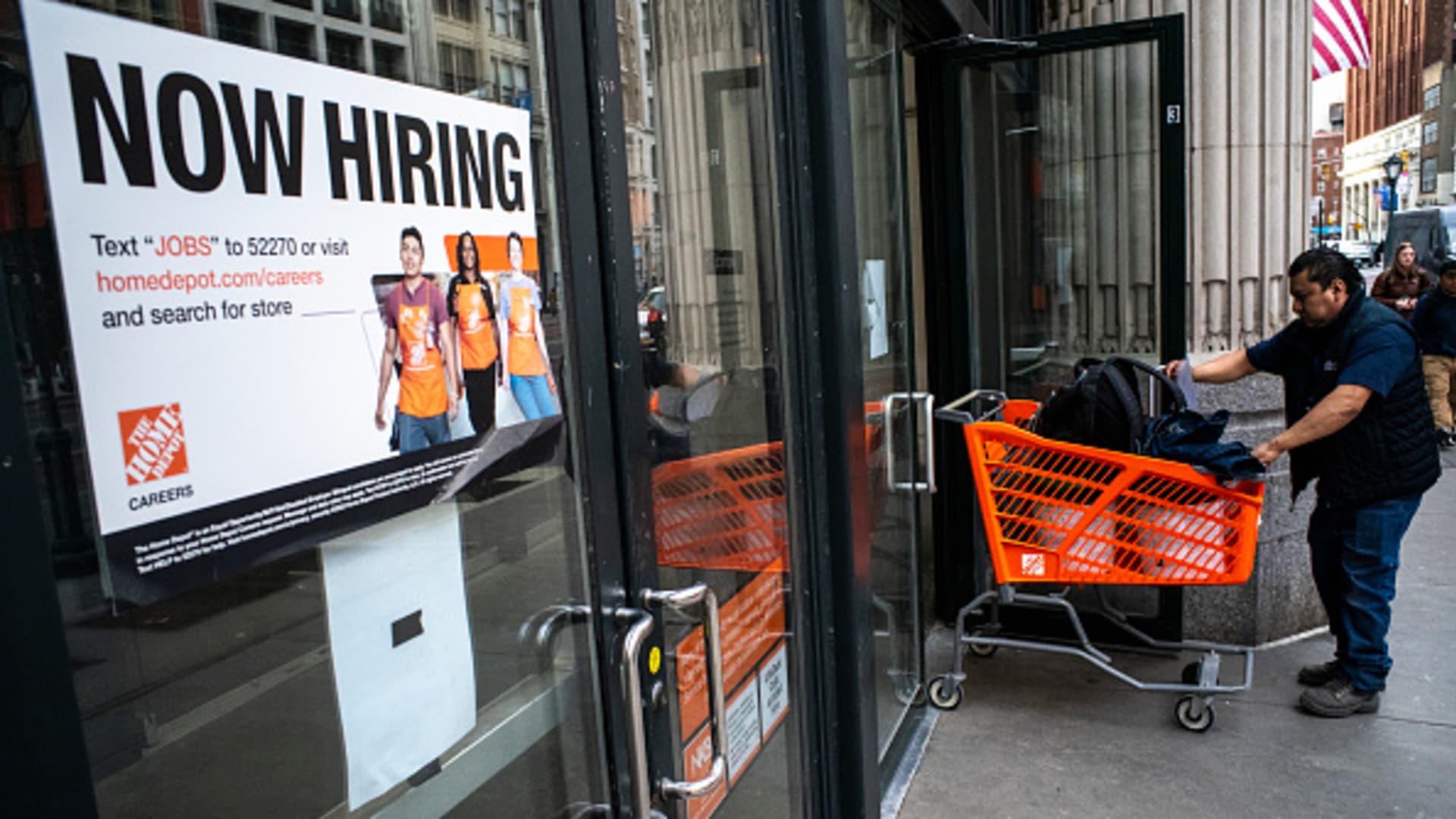Private sector job creation slowed to a crawl in February, fueling concerns of an economic slowdown, payrolls processing firm ADP reported Wednesday.
Companies added just 77,000 new workers for the month, well off the upwardly revised 186,000 in January and below the 148,000 Dow Jones consensus estimate, according to seasonally adjusted figures from ADP.
The total was the smallest increase since July and comes at a time when worries are rising that economic growth is slowing and worries brew that President Donald Trump’s tariff plans will spark another round of inflation. ADP said annual pay rose 4.7% in February, the same as the prior month.
“Policy uncertainty and a slowdown in consumer spending might have led to layoffs or a slowdown in hiring last month,” said ADP chief economist Nela Richardson. “Our data, combined with other recent indicators, suggests a hiring hesitancy among employers as they assess the economic climate ahead.”
Though most economic data points remain positive, sentiment indicators have shown rising fears among both business executives and consumers that the Trump tariffs could raise prices and slow growth. In the extreme scenario, the combination could cause stagflation, a condition of flat or negative growth and rising prices.
The ADP report reflected some of those concerns, as a sector that lumps together trade, transportation and utility jobs saw a loss of 33,000 positions. Education and health services reported a decline of 28,000, while information services decreased by 14,000 at a time of uncertainty for artificial intelligence-related companies, despite Trump’s commitment to advancing AI efforts.
On the positive side, leisure and hospitality jobs jumped by 41,000, while professional and business services added 27,000 and financial activities and construction both saw gains of 25,000. Manufacturing also reported an increase of 18,000, countering the ISM manufacturing survey for the month that indicated companies were pulling back on hiring.
Services and goods-producing were in unusual balance for the month, adding 36,000 and 42,000 respectively on the month. As the U.S. is a services-based economy, that side usually dominates in job creation.
Employment growth tilted towards large firms in February, with companies employing 500 or more workers reporting a gain of 37,000 while those with fewer than 50 employees saw a loss of 12,000.
The ADP count serves as a precursor to the Labor Department’s Bureau of Labor Statistics report on nonfarm payrolls, due Friday. However, the two reports can differ substantially due to different methodologies. In January, the BLS reported an increase of just 111,000 in private payrolls, well below the ADP count.
Economists surveyed by Dow Jones expect Friday’s report to show job gains of 170,000 and an unemployment rate steady at 4%.

 Accounting1 week ago
Accounting1 week ago
 Economics1 week ago
Economics1 week ago
 Personal Finance1 week ago
Personal Finance1 week ago
 Accounting1 week ago
Accounting1 week ago
 Finance1 week ago
Finance1 week ago
 Economics1 week ago
Economics1 week ago
 Economics1 week ago
Economics1 week ago
 Economics1 week ago
Economics1 week ago






















